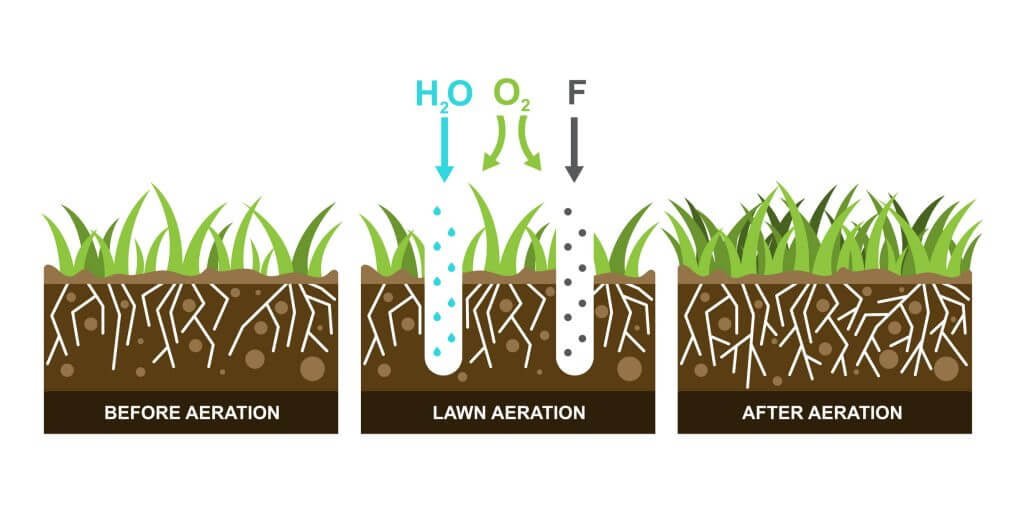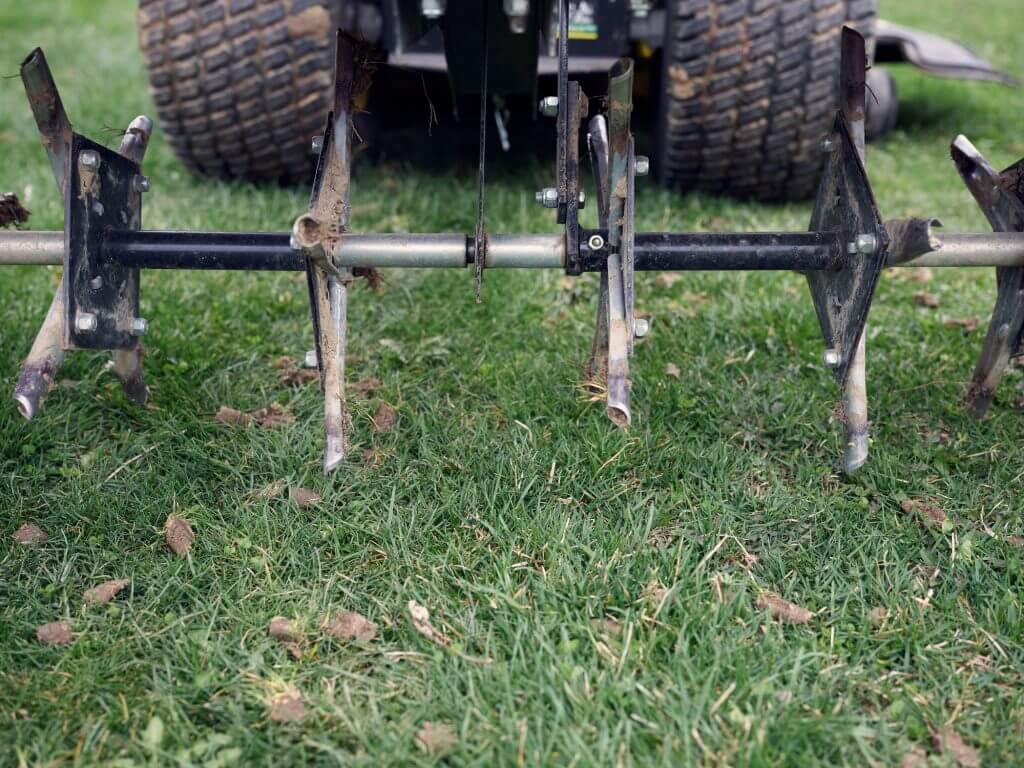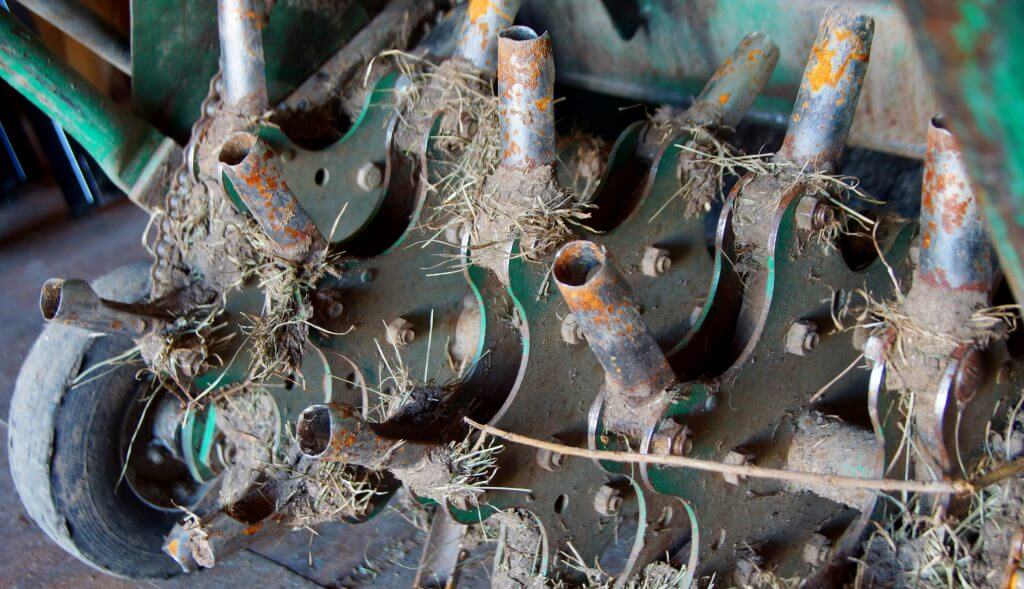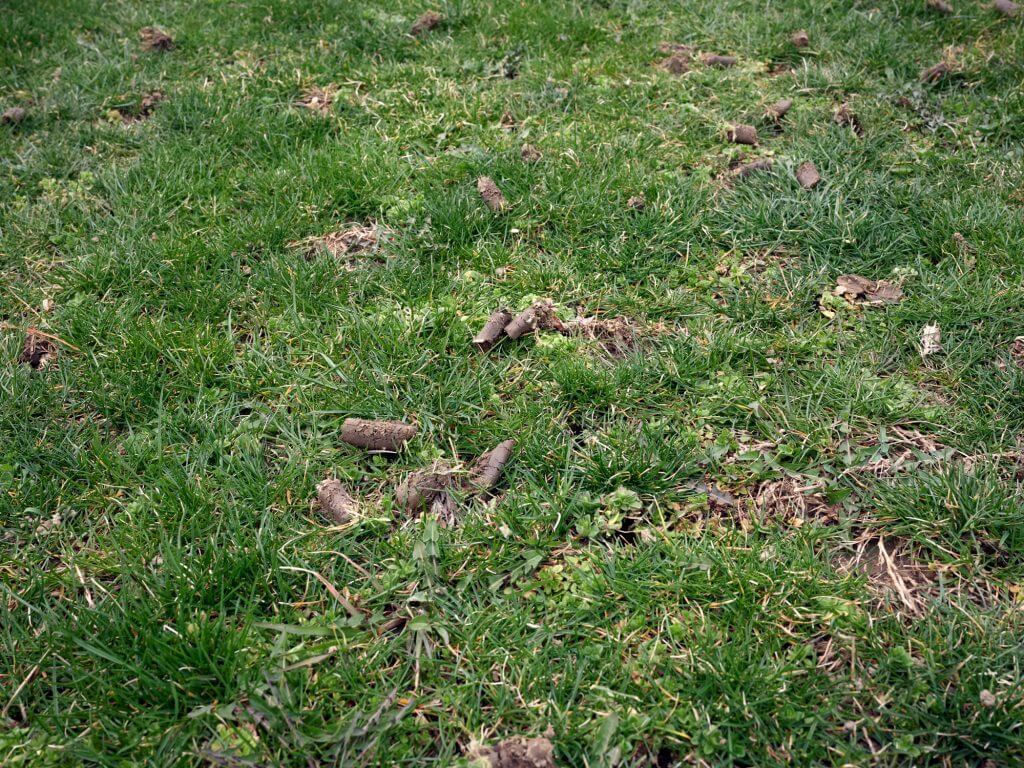Lawn coring is the process of using a piece of equipment with hollow tines that could dig holes into the soil and take out some organic material for lawn aeration.

Why Lawn Aeration Through Coring is Important
Lawn aeration is necessary to address problems caused by compaction or too much thatching, and lawn coring is one of the methods used for soil aeration. It is essential to aerate the soil occasionally to ensure that the grass gets a proper supply of water and nutrients.
There are times when the lawn does not get enough water and nutrients through the soil because of compaction. Compaction is when the ground becomes denser due to factors like the type of soil and how the lawn is used. Clay soils are more prone to compaction than those mixed with sand. More information on Clay Soils here. It may also occur when the lawn is heavily used, such as children and pets playing, heavy foot traffic, playing sports on the grass, or even because of the use of heavy equipment such as big lawnmowers.
Another thing that could hinder healthier lawn growth is thatching. If thatch on the lawn gets too thick, it could cause waterlog as well as prevent the grass from getting enough air and nutrients. Check out our full guide on dethatching lawn here.
Through lawn coring, chunks of soil (also called cores or plugs) are removed from the lawn, creating holes that would allow the roots to absorb more nutrients. The holes will allow for water, air, fertiliser and other organic material that the grass needs to seep through deeper into the soil and the root systems.


Lawn Coring Equipment
There are several methods you could use to core your lawn for lawn aeration, and it depends on the kind of equipment you plan to use. Some of these, such as the manual equipment, may be bought at a cheaper price from your local hardware store. Some machines may be too costly to buy, so renting them from a lawn care company is more cost-effective.
Manual lawn corer
Manual lawn corers come in a variety of styles and models with different handles and materials. But the common thing is that each of these has long bars with hollow tines at the end for coring. The handles and length of the tines also vary. Some are made of heavier materials than others, but they all serve the same purpose.
To use a manual lawn corer, you will need to apply your own strength to exert pressure enough to penetrate the soil, which is usually done by stepping on the bar holding the tines at the end and pushing it downwards, digging into the ground.
The advantage of using manual corers for lawn coring is that it could save you money. However, a significant disadvantage is the time and effort you need to put into actually coring the lawn. It is also more challenging to ensure an even distribution of holes, as well as the challenge in gauging the depth you need to core if the tines on your corer are longer than you need.
Lawn coring machines
Lawn coring machines are probably the better choice for a more thorough, even and precise lawn coring. Lawn coring machines also come in different models, and the types of tines may also differ.
Some lawn coring machines are self-propelled, while some need to be pushed. There are also lawn coring machines you can ride on. The type of coring may also vary as some machines have the hollow tines attached to a drum that rolls around as it cores, and there are some that core the lawn by pushing the tines down on the soil.


How to Core Your Lawn
Before the actual coring, you need to prepare your lawn and have all the things you need ready such as:
Lawnmower
Lawn coring machine
Fertiliser (if you want to feed your lawn after coring)
Topsoil or topdressing (if you will topdress after coring)
Garden rake
Lawn sweeper (if your lawnmower does not have a catcher)
Prepare your lawn
To prepare your lawn, you may choose to mow the day before. Some grass may survive and benefit from scalping as well. Check to see if your grass needs to be cut severely or lightly. Remember to clean up the grass clippings.
Most importantly, water your lawn the day before coring, if the soil is too dry. If it just rained, check the ground to make sure it is not too wet. It is crucial to make sure that the soil is not dry, but not too wet and soggy. Dry soil will make coring ineffective because the coring tines may not penetrate the ground, or it may penetrate, but the soil will disintegrate and will not be removed from the holes, which would defeat the purpose of coring for lawn aeration. If the soil is too soggy, it will cause blockage in the tines, or it may also cause the soil not to come out as the tines are pushed down.
Mark sprinkler heads
It is important to mark sprinkler heads so you can avoid them because you do not want to hit them as you go over your lawn with the lawn coring machine.
Prepare the machine
If you choose to use a machine to core your lawn, make sure to follow the instructions carefully. Also, remember to adjust the depth you want your tines to go. If you have an irrigation system installed, you may want to set the depth so that the tines will not hit your irrigation system and damage it.
Lawn Coring
Using the method you have chosen, pass over your whole lawn to core it. Go over a small area first and check if you have set the proper depth on your requirement. You can do this by either checking the cores that were unplugged from the holes or by checking the holes by using a stick or your finger.
You may need to make several passes all over the lawn to ensure even coring. Also try to pass from different directions, for example going horizontal the first pass, then vertical the next. You can also choose to go diagonal.


Cleanup the cores
Some people advocate for leaving the cores after lawn coring. If you choose to do that, make sure to break them up through raking or mowing over them because clumps of soil left on top of the grass may cause the grass to wither. It is especially true if you have clay soil as they tend to clump more, hindering the grass from getting sunlight and nutrients.
Should you decide that you want to clean up the plugs, you can do this by manually raking up the cores, or by using a machine designed for that purpose, like a lawn sweeper.
Apply fertiliser and topsoil
Since lawn coring is done as part of the regular lawn maintenance, it usually comes with feeding and topdressing. This is because the process of lawn aeration allows for better absorption of nutrients. Follow the instructions for the proper application of fertiliser and topsoil. Full guide on topsoil for lawn here.
Water the lawn
Water your lawn as required after you finished with coring and clean up, or after you have applied fertiliser and topsoil.
When to Core Your Lawn
Take note that although lawn coring is beneficial, it will still cause a little stress on the grass. It is important to consider whether the grass on your lawn is warm-season or cool-season so that you can adequately care for it. The best time to core the lawn is during its active growing season.
For warm-season grasses like Couch, Zoysia, Kikuyu or Buffalo, the best time to core is from late spring to early autumn. For cool-season grass like Kentucky Blue Grass or Tall Fescue, it is best to core during late autumn up to early spring, as long as the ground is not frozen.
If your lawn is beyond repair, check out our Instant Lawn Hobart page. Harwood’s Garden Supplies are the experts in Instant Lawn. We can turn your barren patch of weeds into a beautiful Instant lawn in 3 days or less. Thinking about seeding your lawn? Check out our Seeded Lawn vs Instant Lawn Guide here.
